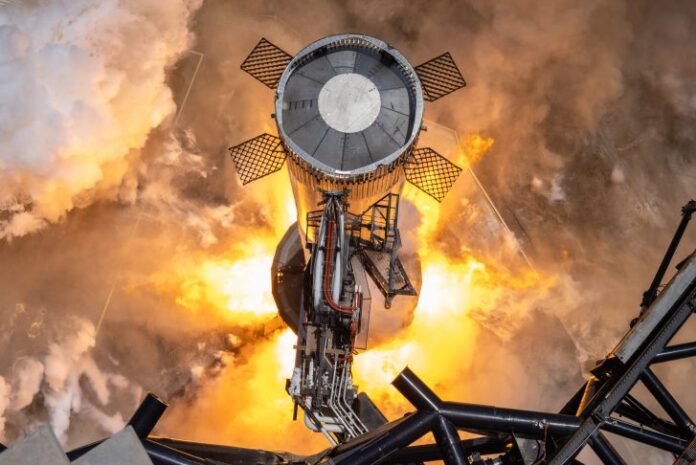
After a flurry of activity late last month and for most of September, the tempo surrounding SpaceX's next planned orbital test flight for its Starship rocket seems to have broken due to regulatory constraints. However, true to form, SpaceX is busy testing and building new rockets at its facilities in Boca Chica, Texas, and word on the street suggests that the firm is making upgrades to the flight termination system of the booster that will fly the second test flight. At the same time, other testing in Boca Chica shows that the firm recently blew up a tank likely to test its structural limits as part of the Starship development program.
SpaceX Removes Hot Staging Ring On Starship Booster As It Waits For Second Test Flight
The first Starship test flight in April came with a variety of predictions about the outcome of the program. The worst of these had claimed that the rocket would be grounded until 2024, which could potentially affect NASA's plans to land humans on the Moon under its Artemis program. NASA has contracted SpaceX to land astronauts through Starship, and before the firm can fly these missions, it has to demonstrate several aspects of the full rocket system.
These include not only the ability to reach orbit but also a demonstration of in orbit fuelling, which will see a tanker Starship transfer fuel to the lunar Starship. Now, as SpaceX has conducted nearly all tests for the latest test rockets, regulatory hurdles have rekindled fears that the next Starship flight might not take place this year.
Ironically, it isn't the rocket that is responsible for the potential delay. While Starship did self destruct during the April test, this was the likely outcome simply because it is the world's largest and most complex rocket. However, what many failed to predict was the damage to the launch site from the launch, and while SpaceX was quick to rebuild the pad, getting approval from the Fish and Wildlife Service for the launch pad is now the primary hurdle to liftoff.
Pop goes the weasel... I mean test tank.
This is a cryogenic pressure test to failure of SpaceX's 26.1 test tank. @NASASpaceflight https://t.co/Fatc0NQj2M pic.twitter.com/y7ci3y8QIw
— Sean Doherty (@SeanKD_Photos) September 22, 2023
As it waits on the wildlife service, SpaceX is developing new rockets and testing its equipment. One such test was a tank test that took place yesterday, and it saw clouds of propellant cover the site after the test article was likely overpressurized on purposes. Such tests are common in rocket development, and they provide engineers with crucial data about the structural strength of their equipment and where potential failure points might be.
SpaceX's rocket development is different from the traditional aerospace industry and NASA. While the latter two slowly build a vehicle over the course of years, SpaceX quickly builds equipment, tests it to failure and then makes the required upgrades.
Due to this, the firm is also busy producing new Starship test articles with upgrades even as it waits for the second orbital test flight. Recent upgrades to the Starship rocket include new engine gimballing systems, upgrades to the Raptor engine's valves and seals, changes to the self destruct or flight termination system mechanism and a better fire suppression system designed to eliminate or reduce fires inside the rocket's engine bay.
Most of these systems were responsible for the multiple failures in the April test that saw the world's largest rocket lose several of its engines during flight and then somersault in the air as it waited for the flight termination system to activate.
WccftechContinue reading/original-link]




